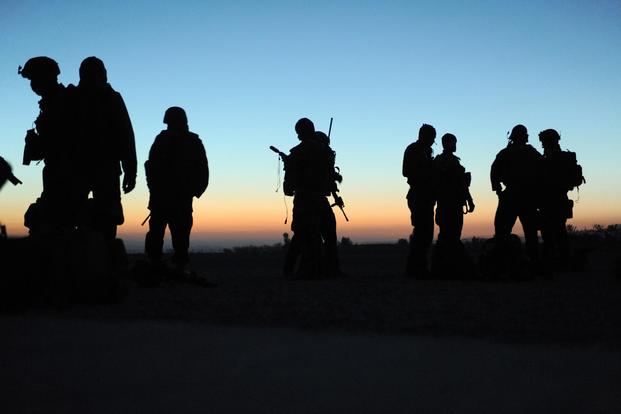Editor's Note: This story has been updated. Military officials initially reported that a U.S. contractor was also killed in the blast; he was later discovered to have survived.
Three U.S. service members and three other U.S. troops were wounded Monday by an improvised explosive device near Bagram Air Base in Afghanistan, according to a news release from Operation Resolute Support.
The wounded troops were evacuated and are receiving medical care, officials said in the release. The names of the casualties are being withheld for at least 24 hours pending next-of-kin notification.
Defense Department officials told The Wall Street Journal that the explosion was the result of a Taliban attack on a convoy carrying the American service members outside the largest U.S. military base in Afghanistan.
The Taliban claimed responsibility for the attack on Twitter, saying it was the result of a suicide bombing on a U.S. armored vehicle.
Last month, Army Sgt. 1st Class Will Lindsay, a Green Beret, and Spc. Joseph P. Collette were killed during an operation, marking the third and fourth deaths for the U.S. military in Afghanistan this year. Collette and Lindsay were killed in Kunduz province "as a result of wounds sustained while engaged in combat operations," officials said in a statement March 23.
For months, the U.S. and the Taliban have been negotiating a potential agreement to end the 18-year war after President Donald Trump signaled that he was open to additional diplomatic conversations.
Following then-Defense Secretary Jim Mattis' departure in December, the president said additional peace negotiations were ongoing.
"In Afghanistan, my administration is holding constructive talks with a number of Afghan groups, including the Taliban," Trump said during his State of the Union address in February. "As we make progress in these negotiations, we will be able to reduce our troop presence and focus on counter-terrorism. We do not know whether we will achieve an agreement, but we do know that, after two decades of war, the hour has come to at least try for peace."
Secretary of State Mike Pompeo told lawmakers in March that reducing violent extremism by the Taliban and the Islamic State would spur "real negotiations about what a political resolution would look like in Afghanistan, but always being mindful of the risk."
He told the House Foreign Affairs Committee on March 27 that U.S. officials are trying to convince all parties, including Afghanistan President Ashraf Ghani and his government, to reach a reconciliation.
"When we do that, we'll be able to reduce not only American forces there, but importantly the NATO forces that are located inside and working together alongside us inside of Afghanistan," he said.
-- Oriana Pawlyk can be reached at oriana.pawlyk@military.com. Follow her on Twitter at @Oriana0214.












